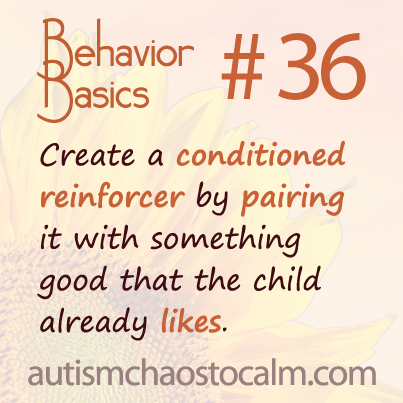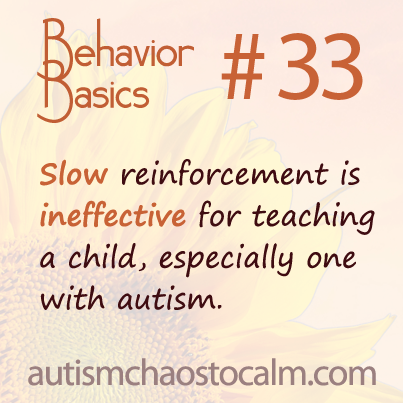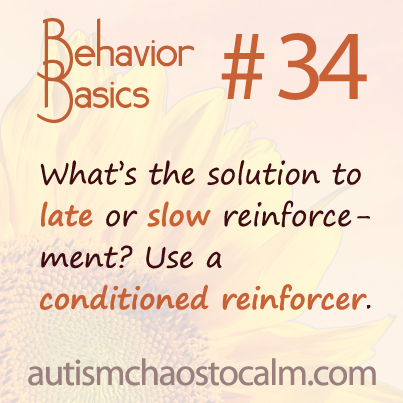 37. Good candidates for conditioned reinforcers are a short, sharp sound, flash of light, quick hand signal.
37. Good candidates for conditioned reinforcers are a short, sharp sound, flash of light, quick hand signal.
In Behavior Basic #30, we discussed how the TIMING of the reinforcer is information for the child. Specific, precise, timely reinforcement builds behaviors faster than slow, late reinforcement. How can you deliver split second reinforcement in a real-time setting? With a conditioned reinforcer that is short, sharp and fast. The best reinforcers are a short, sharp sound, a quick flash of light, or a quick hand signal. The TAGteach tagger is an ideal tool for several reasons. It can mark a split second of behavior the moment it occurs, and, it is light, portable and low cost. It is easy to use: with a quick press of the thumb, the metal tab makes a click sound: the child knows instantly that he has accomplished the tag point and will soon be getting a treat. It is simple, easy, and effective. Taggers are available from www.tagteach.com, and cost about $1.50.
 38. Use a conditioned reinforcer immediately after the behavior – follow with the candy, stickers, etc.
38. Use a conditioned reinforcer immediately after the behavior – follow with the candy, stickers, etc.
Use the conditioned reinforcer, such as the TAGteach tagger (or clicker), and mark the behavior immediately after the child has achieved the tag point. The more closely the desired behavior and reinforcer are paired, the faster the child will learn. This simple, fast process of tag and treat, tag and treat, is a great way to build behaviors faster, plus, it is pleasant for the child.
REMINDER: This concludes the wrap-up of Behavior Basics for the week. Please remember the schedule: On the release date of each module, the Behavior Basics for that module will be compiled into a PDF ebook available from our blog and Facebook page. Click on this link to download the entire series of 42 Behavior Basics for free: http://statictab.com/m7bizwt.










